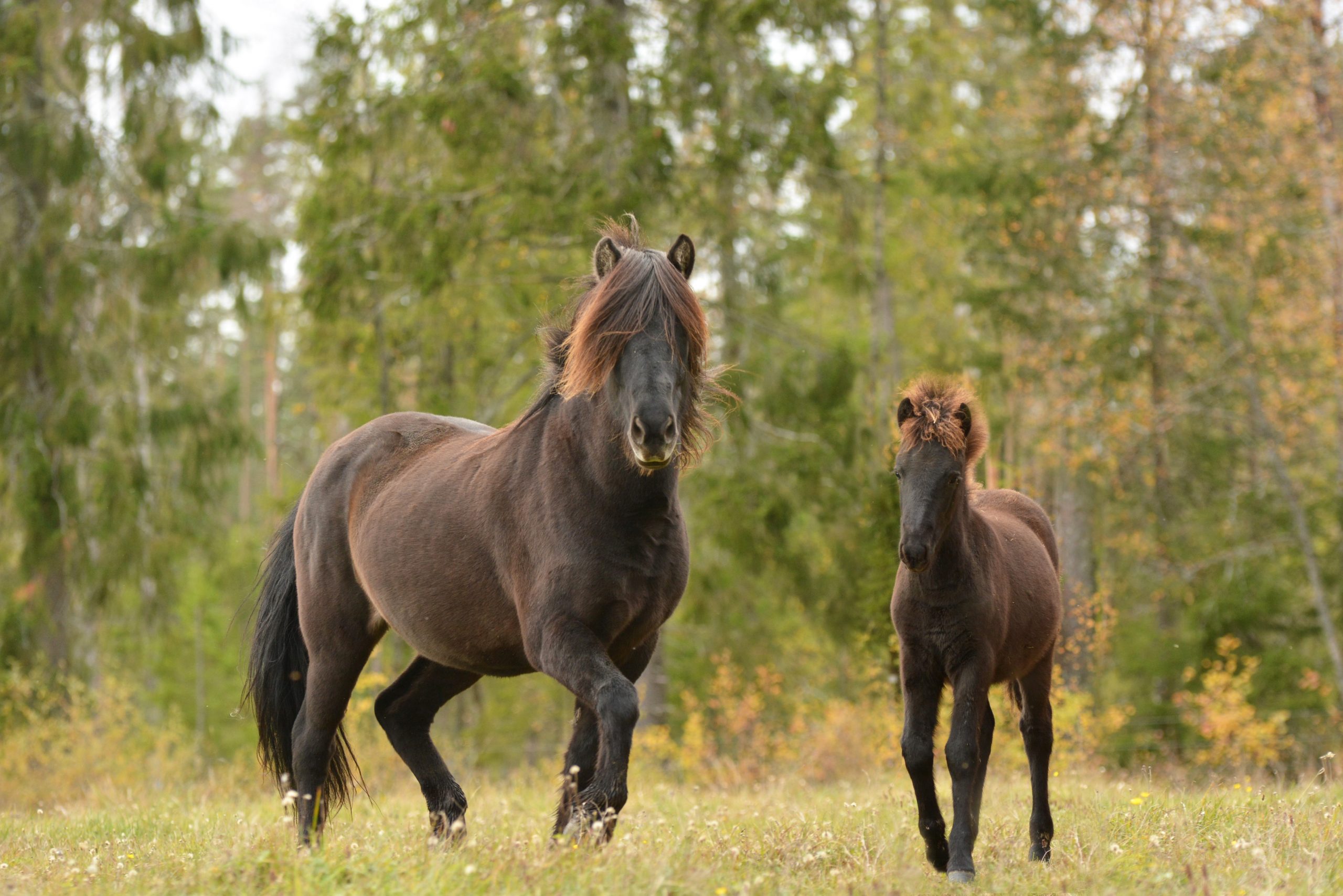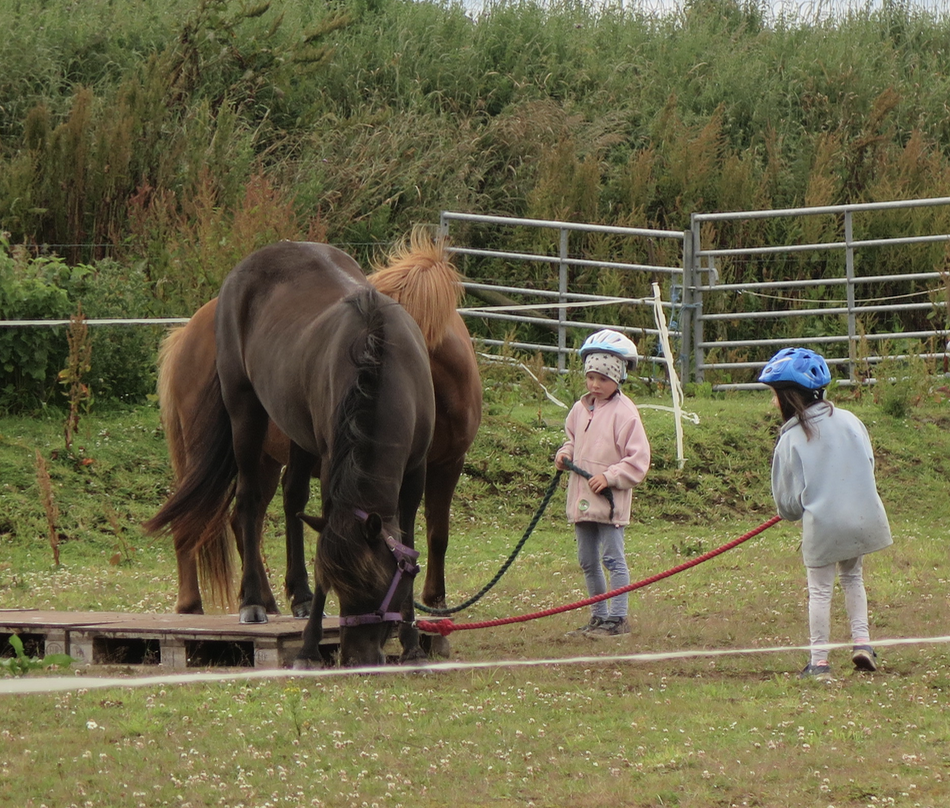FEIF aims to set the highest standards for breeding and riding pure Icelandic horses
The Icelandic horse
The Icelandic horse is a descendent of horses that were brought to Iceland during the settlement in the period of 874-930 and is one of the purest horse breeds in the world. They have been isolated on Iceland for more than 1000 years without any genetic input from other breeds.
Since the horse was so widely used for riding, good riding abilities, vigour and strength were particularly valued. As for the riding abilities, a willing horse with good speed capacity, length of stride and suppleness had been highly appreciated, as these were the desirable attributes for daylong travelling.
Nowadays, Icelandic horses can be found all over the world. More than 280,000 Icelandic horses around the world are registered in the WorldFengur database.

Video by Horses of Iceland
The gaits of the Icelandic horse
The Icelandic horse is a versatile riding horse that is used for leisure riding, travelling and in various competitions. The versatility of the Icelandic horse consists of, among other things, its five gaits. Its basic gaits are walk, trot, and canter. In addition, it is capable of tölt as well as pace. In riding and breeding the Icelandic horse, a heavy emphasis is put on the gaits, of which tölt and pace are considered the most desirable, although the versatility of the horse is highly valued as well. The emphasis on the gaits is clearly reflected in the various competitions for the Icelandic horse, which are in most cases gait competitions.
In addition, the Icelandic horse is a riding horse used both for short distance leisure riding as well as for travelling on longer journeys.
The main goal in regards to the gaits is to keep them pure and clearly distinguished. A pure gait has a correct beat, the horse moving freely without constraint or mistakes in an even rhythm. The gaits should moreover possess long, roomy strides and lightness and the movements of the horse should be high and supple.
The character of the Icelandic horse
The Icelandic horse is known for being a versatile, four- or five-gaited horse with an authentic and inviting character. The horses are friendly, adventurous, intelligent and quick to learn. They are in general very easy to handle, with a good temperament and great willingness to work.
The gaitedness of the Icelandic horse has been preserved through the centuries, and with an increase in leisure activities, the riding abilities of the Icelandic horse facilitated the development of a new tradition of leisure riding, sport competitions and travelling on horseback. This versatility is highly treasured and one of the most important breeding goals.


Photo: Zanna Hofvander
Breeding Icelandic horses
Our general breeding expectations for an Icelandic horse are to have a healthy, fertile , and durable riding horse, robust yet elegant and versatile with four or five excellent gaits. The conformation should offer optimal natural balance, and the movements should be supple, high, and ground covering in all gaits, giving an elegant and powerful image. As early as 1969 FEIF established the FEIF assessment system and breeding standard for Icelandic horses, in order to attain the breeding goals and to keep the breed pure.
It is very interesting to be a breeder of Icelandic horses today. Genetic research and statistical work correlating specific conformation traits with ridden performance provide us with more information, which can help breeders make informed mating decisions. The work on the international breeding standard as well as an assessment system is never complete.
Education and training
Within FEIF, education is organised at a national level. Each national association manages its own educational system for the learning of riding and horsemanship for Icelandic horses.
Training the trainers
The education of trainers and instructors is the responsibility of each member organisation. FEIF neither has the means nore the wish to enforce a unified education system. But how do you bring together educational matters at an international level?
FEIF has created a system, which allows the seamless recognition of qualifications and skills for instructors across all member nations, by using a list of competencies at various levels that is expected as a minimum standard. It is called: the Education Matrix.

Related news
FYCamp 2025 – Day 3
How often do you try to reach for your left foot with your right hand when sitting in the saddle? That - and many other seat exercises - were practised by the participants on day three of the 2025 FEIF Youth Camp in Iceland finally getting on a horse under the...
FYCamp 2025 – Day 2
A sense of place, a sense of self and a sense of others: the first full day of the FEIF Youth Camp 2025 started with an introduction of the programmes offered by the Agricultural University of Hvanneyri, a small institution with a proud history. This was followed by...
FYCamp 2025 has started!
They have arrived! The participants of the FEIF Youth Camp 2025 have arrived in Hvanneyri, one of Iceland’s two universities that offer equine studies. Over 30 young people aged 14-17, from 11 FEIF member countries have come together for a week of horse related...
Preliminary Time Schedule out for WC 2025 in Birmenstorf CH
In 42 days, the 2025 Icelandic Horse World Championships will take place in Birmenstorf, Aargau. Around 200 riding pairs from 19 nations will compete in various disciplines from sport and breeding to win one of the 18 coveted world championship titles. A total of over...
EHN Foresight Study: looking forward towards 2040
The European Horse Network (EHN) started a process with its 34 members to generate scenarios of the future. They are only thought experiments about possible future developments and possible impact for the horse industry. The four scenarios were created around two...
Breeding Shows 2025
This year, breeding shows are taking place in 9 different FEIF-countries and they are currently in full swing.The earliest breeding shows started in Germany in the beginning of april (only confirmation) and the last one will be in Denmark in the beginning of...
The Icelandic Horse History Centre opens its doors again this summer
A new exhibition was opened at the Icelandic Horse History Centre on June 1st. Visitors are invited to learn about Icelandic horse colours and the studbook WorldFengur, as well as to explore a variety of fascinating objects connected to outstanding horses and riders....
World Championships 2029
We are all talking and training and working for the World Championships 2025 in Birmenstorf, Switzerland, where we hope to meet all of you! Preparations for the World Championships 2027 in Germany, Rieden, already started! Nevertheless, FEIF needs to prepare for the...
Blood mare industry in Iceland
As you may be aware about 4000 pregnant mares in Iceland are used for the production of PSMG, a fertility hormone that is mainly used in pigs in Europe. Animal welfare groups within Iceland and abroad have been protesting against this practice for several years now,...








